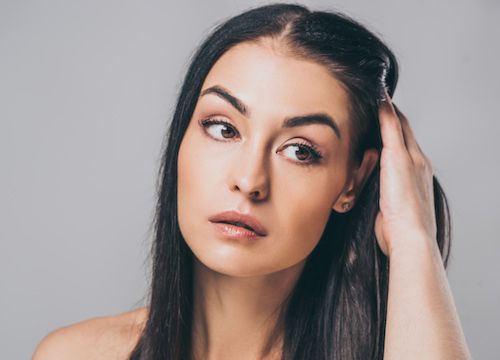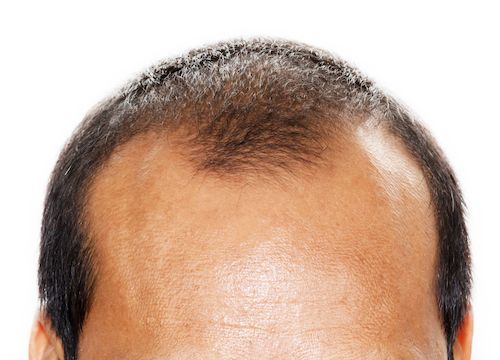When you haven’t hit 40 yet and hair loss becomes an issue, you may start to feel anxious or stressed. “Am I going bald?” is probably a question running through your mind.
Firstly, try not to stress. One, because that may make the hair loss worse, and two, because there are treatments that work!
The first step (before diving into any over-the-counter hair loss product you can get your hands on) is to have a chat with a hair loss expert to find out what is causing your hair loss. It helps determine whether the loss temporary or progressive, and what treatment options are best suited to you.
Five solutions for hair loss
1. Prescription medications
Prescription medication can stop or slow down androgenetic alopecia or male pattern baldness. It works by blocking DHT (dihydrotestosterone), a hormone linked to male hair loss.
This particular medication is usually not recommended for women due to its potential to interference with the estrogen-testosterone balance. An alternative topical medication for women can be used to stimulate hair follicles, strengthening them and encouraging new growth.
2. Supplements and lifestyle changes
Lifestyle and diet can also impact the quality and growth of our hair.
Poor diet, stress or not getting enough sleep can make hair growth suffer. Supplements specifically developed to treat hair loss can help give our bodies the nutrients it needs for healthier hair growth.
A nourishing diet, good sleep hygiene and regular exercise all contribute to better functioning body systems.
3. Hair care products
Sometimes we need to take better care of our hair and scalp. Dry, harsh conditions can lead to a scaly scalp and hair splitting or breaking. Think of it like trying to grow a healthy plant in the desert!
Taking good care of your hair and scalp gives you the best chance for healthy hair growth. Using volumising products is a great way to give thinning hair a thicker appearance.
4. PRP therapy
You may have heard about PRP (Platelet Rich Plasma) for facials - it’s often used to rejuvenate ageing skin. Well, PRP is also used to treat hair loss – to strengthen hair follicles and stimulate new hair growth.
During treatment, a small amount of your blood is taken, spun in a centrifuge to isolate the plasma and then it’s injected into your scalp where it’s needed.
5. Hair transplant
A hair transplant offers a permanent and natural solution to hair loss. It can be used to redesign a hairline, reduce forehead size, fill in bald patches or to add density to thinning areas.
Every hair is placed at the correct angle and direction so it blends seamlessly with the surrounding hair. Hair transplants here at Gro are virtually painless, and there’s no stitches and scarring.
Solutions for every stage of hair loss
Early Stages
What it looks like: Early stage hair loss appears as thinning through the crown or top of the head. The hairline starts to recede.
Treatment options: Early stage hair loss treatment options include prescription medication, supplements, hair care products and PRP therapy.


Progressive hair loss
What it looks like: A noticeably receding hair line, clearly visible thinning (where you can see the scalp through the hair) or small-to-medium sized bald patches signify progressive hair loss.
Treatment options: Progressive hair loss can be treated with PRP to encourage new hair growth, prescription medications to treat hair loss, or a hair transplant to restore lost hair.
Advanced hair loss
What it looks like: Loss of the hairline and large bald areas signify advanced stage hair loss.
Treatment options: By this stage, solutions are limited. Hair transplant is only viable if there are enough donor hairs (on the back and sides of the scalp). A hair system (wig) may be the only solution at this point. Alternatively, embrace your baldness!
Take action
No matter what your age or stage, the first step to treating hair loss is to speak with a Hair Growth Specialist to discuss your hair loss, what’s causing it and what treatment options are suitable. Call us on 1300 787 563 if you have any questions!









